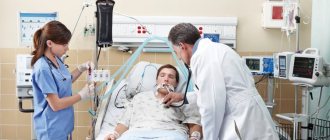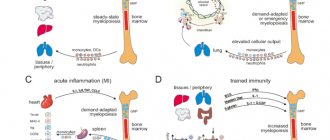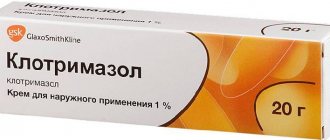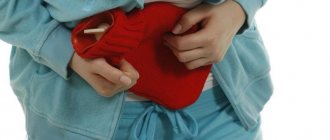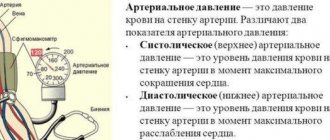Nowadays, the statement that the woman is always to blame for the impossibility of conceiving a child has long lost its relevance. Thanks to modern technologies, it has been possible to find out that quite often the woman has nothing to do with it, it’s all about the man, whose seminal fluid does not have sufficient quality to fertilize the egg.
Andrologists estimate that approximately 40% of married couples cannot conceive a child due to the fault of the man. However, many men, especially in our country, do not want to admit this fact and stubbornly refuse to undergo examination for sperm quality, for some reason believing that this is beneath their dignity. This is a dangerous misconception that can cause family breakdown. This article will discuss such a pathology as asthenozoospermia: what is it, how does it manifest itself, why does it occur and how to treat it?
Sperm motility assessment
Types of mobility
Why does it occur
Medicine does not name clear reasons that caused asthenozoospermia. The list of factors is established based on the results of a survey of men who have encountered this problem. They encountered disturbances in the structure of sperm and the composition of sperm:
- displacement of one of the parts of the sperm (head, neck, flagellum), which can be caused by injury or a genetic disorder;
- increased sperm viscosity;
- insufficient amount of glucose in the ejaculate;
- a shift in the acid-base balance of sperm to the acidic side;
- the presence of chlamydia, ureaplasma, mycoplasma on the surface of sperm;
- genetic defects of germ cells.
Asthenozoospermia can also be caused by intoxication with alcohol, drugs, nicotine, medications or industrial poisons. This disorder is no less common in cases of sexually transmitted diseases, as well as inflammation of the pelvic organs, varicocele, hydrocele, prolonged and regular exposure of the genitals to low or high (sauna, bath) temperatures. This causes an increase in viscosity and acidification of the sperm, leading to sperm gluing, causing them to become less mobile and active.
Other reasons include:
- long-term stress and depression;
- abstaining from intimacy for too long;
- prostatitis, spinal diseases, chronic constipation and other diseases that cause circulatory disorders in the pelvis.
Causes of asthenozoospermia
Contrary to popular belief, the disease is not related to a man’s age. There are three groups of factors that can influence the condition of sperm: genetic, external and internal.
The genetic cause of the disease is a congenital mutation. As a result, sperm develop defects in the structure of the flagellum, head and neck, that is, the elements that are responsible for the movement of the sperm.
External factors contributing to the development of asthenozoospermia:
- exposure to nicotine, alcohol, drugs;
- poisoning with medications, industrial poisons;
- exposure to radiation;
- frequent exposure to high or low temperatures;
- poor ecology in the place of residence;
- stress;
- weakening of the body and decreased immunity;
- prolonged absence of sexual activity.
Internal causes of the disease:
- venereal diseases;
- violation of the amplitude of sperm pulsation.
- unsatisfactory state of prostate secretion;
- inflammation of the seminal glands;
- dysfunction of the immune system;
How is it diagnosed?
The main study for asthenozoospermia is a spermogram. The diagnosis is confirmed by deciphering the results of this procedure. As part of the spermogram, the trajectory, speed and concentration of sperm are assessed. Normally, active sperm should be at least 70%. A spermogram is prescribed:
- couples who cannot conceive a child within 12 months despite regular attempts;
- with a complicated medical history, when either partner had problems conceiving;
- patients planning to freeze (cryopreserve) sperm.
Degrees of asthenozoospermia
Depending on the number of motile sperm in the semen, several degrees of asthenozoospermia are distinguished. Exist:
- Asthenozoospermia 1st degree, or mild. There is less than half of motile sperm in sperm (40-50%).
- Asthenozoospermia degree 2, or moderate. The number of sperm with type 1 movement is 30-40%.
- Asthenozoospermia 3rd degree. The number of sperm with type 1 movement does not exceed 30%.
Diagnostics
Externally, the disease does not manifest itself in any way. The only symptom is the inability to conceive a child. Asthenozoospermia is possible even in men with normal sexual function. In some cases, the pathology is accompanied by decreased libido, erectile dysfunction, and premature ejaculation.
Diagnosis of asthenozoospermia is made on the basis of a spermogram performed twice with an interval of 1–2 months in order to have an idea of the complete picture of spermatogenesis in the body.
As additional studies, it is advisable to conduct an ultrasound examination of the prostate and scrotal organs, tests for the presence of inflammatory processes and infectious diseases, hormonal and genetic blood tests.
Is pregnancy possible with asthenozoospermia?
Asthenozoospermia and pregnancy are closely related. But, contrary to popular belief, this diagnosis does not mean infertility. Asthenozoospermia is a reduced likelihood of conception and pregnancy. But it is possible, and with any degree of violation. The problem is solved by artificial insemination. The main thing is to obtain the number of sperm that will be sufficient for the procedure.
Thus, asthenozoospermia, in contrast to azoospermia, in which there are no sperm in the semen, cannot be called an absolute cause of male infertility. Viable sperm may remain in the ejaculate, but the chance of their union with the egg is not as great as with normal seminal fluid.
Treatment methods for asthenozoospermia
Only asthenozoospermia caused by a genetic factor has an unfavorable prognosis. However, successful fertilization is also possible in this case if IVF is used. If the disease is caused by other reasons, then the quality of the ejaculate can be adjusted.
Doctors at the OXY-Center clinic offer patients comprehensive treatment, which includes several areas:
- massage of the seminal vesicles and prostate - improves the general condition of the reproductive system;
- surgical intervention is recommended by a urologist-andrologist for certain diseases that reduce sperm quality.
- physiotherapy - with the help of laser procedures, the reproductive system is stimulated, rejuvenated and toned;
- medicinal complexes - a urologist-andrologist prescribes drugs that increase the quality and quantity of seminal fluid and improve potency;
- antibacterial therapy - prescribed if asthenozoospermia occurs as a result of sexually transmitted diseases;
- hormone therapy - the use of drugs that increase the amount of male hormones;
Symptoms
Since asthenozoospermia is just a conclusion from an analysis of the ejaculate, there are no specific symptoms. That is, the patient does not subjectively experience any symptoms of reproductive dysfunction: libido/erectile function does not suffer, ejaculation is normal, and since the composition of the ejaculate has no visible changes, the man can remain in the dark about his condition for a long time.
And only when faced with the fact that a natural pregnancy is impossible due to male infertility does he realize the situation. In this case, especially against the background of a long period of infertility/unsuccessful treatment and conflicts in the family, depressive states may develop on this basis.
In cases where asthenozoospermia is caused by diseases of the scrotal organs of an infectious-inflammatory nature ( vesiculitis , orchitis , epididymitis ) or other organs - prostatitis urethritis , corresponding symptoms develop.
Where can asthenozoospermia be treated in Moscow?
For specialists, reduced sperm motility is a well-known condition. They have extensive experience in identifying asthenozoospermia and overcoming infertility caused by this pathology.
- Spermogram and other studies of ejaculate are carried out in our own laboratory equipped according to international standards
- Doctors at our clinics have mastered all proven highly effective methods of treating asthenozoospermia.
- IVF success rates in our clinics are above the national average
Why Scandinavia AVA-PETER
- A world-class high-tech IVF medical center. The first fertility clinic in Russia to be certified according to the international quality assessment system ISO 9001:2008. The clinic is equipped with the highest quality modern medical equipment that meets all modern standards and requirements.
- Vast experience, more than 20 years in the field of reproductive technologies. Many of the specialists were trained in leading European IVF clinics. The clinic’s specialists are regular participants in international and Russian conferences on infertility treatment.
- High efficiency of ongoing ART programs (effectiveness).
What are oligozoospermia, asthenozoospermia and teratozoospermia?
Sperm contains a huge number of spermatozoa, which is why they may have quite a lot of pathologies. Often, a spermogram shows a combination of such ailments as asthenozoospermia and teratozoospermia. The pathology is characterized by the presence in semen of more than 50% of sperm with abnormal morphology. There may be sperm with a macrohead, as well as a deformed and thickened neck. Oligozoospermia is sometimes added to the above pathologies. In this case, the ejaculate has a very low concentration of sperm. If there are pathological forms in sperm, you should refrain from planning a pregnancy. The partner should undergo treatment from a specialist andrologist.
Teratozoospermia in a husband can cause miscarriage or cause disturbances in the development of the fetus. The reasons for the appearance of these three pathologies are the same.
Often the spermogram demonstrates the presence of asthenozoospermia and pyospermia. Pyospermia occurs when the number of leukocytes in the spermogram is higher than normal. Typically, one ml of sperm contains 1 million leukocytes-neutrophils. Pyospermia indicates that there is an inflammatory process: prostatitis, orchitis, epididymitis, vesiculitis. It is also necessary to take into account that severe pyospermia is also the cause of the development of asthenozoospermia.
Currently, according to the World Health Organization (WHO), in 50% of cases of infertility in marriage, certain diseases of the reproductive system in men are detected, accompanied by azoospermia, oligozoospermia, asthenozoospermia, or a combination thereof. In 10-20% of cases, this is an endocrine pathology or genetic disorders leading to abnormalities in the development and functioning of the male reproductive system.
In the structure of the causes of azoospermia or oligozoospermia, the leading place belongs to hypogonadism and hyperprolactinemia. However, in 70-80% of cases when infertile men seek help in semen analysis, isolated asthenozoospermia or astheno-teratozoospermia is detected. At the same time, the number of sperm in semen analysis fluctuates within the standard values recommended by WHO. Thus, most authors note that astheno-teratozoospermia as a syndromic diagnosis requiring differential diagnosis is a very pressing problem of modern andrology, and the search for correction methods is the main goal of the scientific research of many researchers. Unfortunately, this search is not always crowned with success. However, not everything is so pessimistic...
Asthenozoospermia (like teratozoospermia) is not a nosological entity, not a disease or a diagnosis, it is the conclusion of a laboratory doctor who performed an analysis of the ejaculate and revealed a decrease in sperm motility below critical values, and for teratozoospermia - an increased number of abnormal forms of sperm, established by WHO in 2010 [11]. Therefore, asthenozoospermia is a symptom. A natural question arises: a symptom of what? It is now becoming clear that there are a huge number of reasons for decreased sperm activity. It is not possible for the authors to list them all, especially since in a number of cases our differential diagnostic search comes to a dead end. In such cases, the doctor limits himself to a diagnosis that is very incomprehensible to the patient: idiopathic asthenozoospermia. However, it is possible to sum up the results of many years of our own work and the results of observations of WHO specialists. We have made an attempt to summarize the main causes of decreased sperm activity (i.e., to classify diseases accompanied by asthenozoospermia).
Classification of diseases (conditions) accompanied by isolated asthenozoospermia
— Smoking, marijuana, drugs, alcohol
— Abuse of hot baths and saunas
- Wearing excessively tight underwear
— Testicular retention
— Severe and uncompensated somatic diseases
— Taking medications
— Sexually transmitted infections — STIs (chlamydia, ureaplasma, etc.) and chronic inflammatory diseases of the urogenital tract
— Antisperm antibodies
— Obesity
— Hyperprolactinemia
— Varicocele
Diseases accompanied by congenital abnormalities of sperm structure (rare causes)
— Primary ciliary dyskinesia
— Kartagener's syndrome
— “9 + 0” syndrome
— Dysplasia of the fibrous membrane of the tail of the sperm
— Mitochondrial DNA mutations
— Idiopathic asthenozoospermia.
As comments to the above text, the following should be said. The question of the involvement of smoking in the formation of male infertility is very controversial. In any case, it is not indicated what smoking (hookah, cigars or cigarettes) can reduce the active movement of carriers of the owner’s genetic information. The use of marijuana and other drugs actually leads to infertility by changing the balance of androgens and estrogens (toward the predominance of the latter). Temperature effects (baths and saunas) on the germinal epithelium can be considered a proven factor. According to the pathogenetic mechanisms of sperm damage, wearing tight underwear and testicular retention are equivalent to the temperature effects of a sauna.
An attempt to systematize drugs that affect spermatogenesis is doomed to failure. Apparently, it is necessary to make a reservation that sperm will be affected by all pharmacological agents that affect the synthesis and metabolism of sex hormones (including prolactin). There is only one conclusion: you need to carefully read the instructions for the medicine that the patient who comes to the appointment is taking. It should be noted that serious pharmacological drugs, such as steroidogenesis blockers and cytostatics, more often cause oligo-astheno-teratozoospermia or even azoospermia.
Pharmacological drugs that have a negative effect directly on spermatogenesis or the fertilizing ability of sperm (according to W. Schill, 2006 [8] with modifications)
1. Pharmacological drugs that suppress spermatogenesis
1.1. Cytostatics
1.2. Hormonal drugs or drugs that affect the metabolism of sex steroids (androgens and antiandrogens, estrogens, progestogens, glucocorticosteroids, anabolics, cimetidine, spironolactone, digoxin, ketoconazole, etc.)
1.3. Psychotropic drugs
2. Pharmacological drugs that interfere with the fertilizing function of sperm
2.1. Slow calcium channel blockers
2.2. Antiepileptic drugs
2.3. Sulfasalazine
2.4. Antibiotics
2.5. Amantadine and colchicine
3. Pharmacological drugs that suppress sperm transport
3.1. Antihypertensive drugs
3.2. Psychotropic drugs.
More than enough has been said about the infectious nature of asthenozoospermia. A huge number of monographs, articles, and scientific reports have formed the opinion of the authors of the article about a clear “skew” in the significance of these factors in the pathogenesis of dysfunction of the sperm flagellum. In any case, cure for STIs does not guarantee relief from semen asthenia. A number of authors (in our opinion, very justifiably) argue in favor of the fact that it is not so much the infectious agent itself that has a negative effect on the seed, but rather severe multi-stage antibacterial therapy.
The appearance of antisperm antibodies is one of the most poorly studied conditions in andrological practice. Currently, there is no clear answer to the question: why a pathological destructive immune reaction to one’s own cells occurs. The only thing we have is a highly effective diagnostic procedure that allows us to detect antibodies. The MAR test and the ImmunoBead test, as methods with high sensitivity and specificity, allow you to confidently diagnose this condition. Only IVF with the ICSI procedure was effective in correcting immune infertility.
Observation of this group of patients for 10 years allowed us to develop a protocol for examining men with isolated asthenozoospermia and an algorithm for the differential diagnosis of asthenozoospermia (see below). The data presented do not claim to be complete coverage of the problem, but suggest further refinement and improvement, taking into account the acquired clinical practice of the authors and the emergence of new scientific data.
Examination protocol for men with asthenozoospermia
Anamnesis
1. Use of medications (see instructions for use of each drug), including long-term antibacterial therapy for STIs.
2. Use of drugs (including marijuana).
3. Hereditary burden (detection of infertility in the father and brothers or the use of ART).
4. A history of inflammatory diseases of the urogenital tract.
5. Frequent visits to saunas and hot baths.
Objective examination
6. Measurement of height and weight, waist circumference and calculation of body mass index.
7. Palpation of the mammary glands.
8. Inspection of hair growth in androgen-dependent zones.
9. Assessment of skeletal proportions (eunuchoid proportions, reduced height).
10. Examination of the scrotal organs (palpation and assessment of the volume of the testicles, identification of testicular tumors, the presence of the vas deferens and examination of the condition of the epididymis).
11. Identification of signs of varicocele, Valsalva maneuver.
12. Study of inguinal regional lymph nodes.
13. Assessment of the size and developmental anomalies of the external genitalia, including the penis (presence of hypospadias, cryptorchidism).
Instrumental diagnostics
14. Ultrasound of the testicles and organs of the scrotum, spermatic cord (regardless of the presence or absence of palpable formations in the testicles).
15. Ultrasound + Doppler examination of the veins of the scrotum for varicocele.
16. Ultrasound with a transrectal sensor of the prostate gland and seminal vesicles.
Laboratory diagnostics
17. Clinical blood test.
18. Biochemical blood test (AlT, AST, bilirubin, creatinine, urea, total protein, albumin), calculation of glomerular filtration rate.
19. Analysis of ejaculate (biochemical examination of ejaculate, microscopic examination of sperm, assessment of leukocytespermia, sperm kinesigram, sperm morphogram according to WHO, 2010).
20. MAR test or ImmunoBead test to detect antibodies to sperm in the ejaculate (according to WHO, 2010).
21. Hormonal examination (total testosterone, FSH, estradiol, prolactin).
22. PCR of a smear from the scaphoid fossa to detect STIs.
23. Sowing ejaculate on a nutrient medium to identify pathogenic flora and determine the sensitivity of microbes to antibacterial drugs.
Laboratory cytogenetic and molecular genetic diagnostics
24. Molecular genetic study to identify mutations in the primary ciliary dyskinesia gene.
The protocol for examining patients with diseases of the reproductive system will not be disclosed if we do not provide a logical diagram of the sequence of our intellectual work to identify the cause (and, consequently, methods of correction) of asthenozoospermia in a particular patient (see figure).
Figure 1. Algorithm for differential diagnosis of asthenozoospermia. The first place in the differential diagnosis is given to conditions that can be easily identified either by taking an anamnesis, or by objective examination, or using inexpensive laboratory routine procedures. Thus, when examining a patient, it is necessary to focus on identifying signs of varicocele, STIs and immune infertility (antisperm antibodies). Next, this will be a search for genetic causes of damage to spermatogenesis and endocrinological diseases, accompanied by reproductive dysfunction. Ultimately, if the causes of pathospermia are not identified, then a diagnosis of “idiopathic asthenozoospermia” or “idiopathic astheno-teratozoospermia” is possible, followed by the prescription of nonspecific treatment for 3 months. At present, one cannot discount the psychosocial factors that lead to decreased sperm motility and subsequently to infertility. In some cases, the intervention of a psychologist and psychotherapist may be required. Medical genetic counseling is indicated for all patients with severe disorders of spermatogenesis and especially with total asthenozoospermia. It is necessary to conduct a molecular genetic study to identify Kartagener syndrome and primary ciliary dyskinesia. These methods are available, unfortunately, only in large Russian cities and research centers.
Treatment of asthenozoospermia
Before describing various methods for correcting this condition, several indisputable facts should be noted. If a doctor discovers a disease that results in impaired fertility in a man, then the first priority is treatment of this disease. The therapeutic effect on gametogenesis should last at least 3 months. Below are the main methods of influencing spermatogenesis, taking into account the latest scientific data. It is necessary to immediately make a reservation that the possibilities of pharmacological stimulation of spermatogenesis (as opposed to oogenesis) are significantly limited and mostly depend on the causes of asthenozoospermia.
Treatment of asthenozoospermia (according to W. Schill [8] and S. Oehninger [7] with modifications)
1. Gonadotropin-releasing hormone: effective only in cases of insufficient hypothalamic function. Currently not available for sale in Russia.
2. Gonadotropins: effective only for hypopituitarism. Use for correction of asthenozoospermia is not justified.
3. Androgens: have a negative effect on spermatogenesis. The presence of a “rebound” effect has not been proven.
4. Selective estrogen receptor modulators: effectiveness has not been proven in placebo-controlled studies. Possible use for hyperextrogenemia in obese men (experimental data).
5. Aromatase inhibitors: insufficient data. Only the results of experiments.
6. Vitamin therapy: effectiveness has not been proven in placebo-controlled studies.
7. Empirical antibacterial therapy: in conditions of an unrecognized infectious agent has a negative effect on sperm motility.
8. Carnitine: effectiveness in correcting asthenozoospermia has been shown in placebo-controlled studies. There is insufficient data on the effect on pregnancy rates.
9. Acetyl-L-carnitine: the same.
10. Prednisolone and other glucocorticosteroids: effectiveness in correcting immune infertility (antisperm antibodies) has not been proven in placebo-controlled studies.
11. Plasmapheresis: the same.
12. Intrauterine insemination of husband’s sperm: effective for mild asthenozoospermia (sperm category A + B more than 10% according to WHO, 2010).
13. IVF with husband’s sperm: effective for mild to moderate asthenozoospermia (sperm category A + B more than 5% according to WHO, 2010).
14. IVF + ICSI of husband’s sperm: effective for any asthenozoospermia.
15. IVF + ICSI of donor sperm: indicated in cases of severe asthenozoospermia (primary ciliary dyskinesia, Kartagener's syndrome) and ineffectiveness of IVF + ICSI of the husband's sperm.
The use of carnitine and acetyl-carnitine in the correction of asthenozoospermia
Under normal physiological conditions, L-carnitine is present in maximum concentrations in organs and tissues where large amounts of energy are needed to maintain sufficient function, including the epididymis [3]. It has been proven that the need for carnitine for an adult is from 200 to 500 mg per day. It increases up to 20 times during mental, physical and emotional stress, as well as illnesses and stress. The main physiological function of L-carnitine and its acyl derivatives is the transfer of fatty acid residues from the cytoplasm into the mitochondrial matrix through the inner mitochondrial membrane. This is necessary for the generation of energy, which is spent on the life support of the body’s cells. By participating in mitochondrial ATP synthesis, L-carnitine and acetyl-L-carnitine are able to protect these organelles from oxidative stress by removing toxic acyl groups. The presence of an additional acyl group allows acetyl-L-carnitine to more easily penetrate mitochondria and, as a result, perform its functions more effectively.
Briefly about the pharmacokinetics and pharmacodynamics of carnitine. Most tissues, including testicular and epididymal tissues, receive carnitine from the bloodstream unchanged. It enters the cell through a direct energy-dependent process against a concentration gradient. Carnitine is excreted from the body primarily by the kidneys.
In clinical general therapeutic practice, traditional indications for the use of carnitine and acetyl-L-carnitine are neurological diseases, such as early dementia (Alzheimer's disease), cerebrovascular dementia, peripheral neuropathy of various etiologies, primary and secondary involution syndromes against the background of vascular encephalopathies. Carnitine is also actively used to reduce mental performance and to improve concentration and memory. Sports medicine specialists are also showing great interest in carnitine.
The use of carnitine and acetyl-L-carnitine for the correction of asthenozoospermia began in the 70s of the last century. Studies have shown an improvement in sperm motility in men receiving therapy with carnitine and acetyl-L-carnitine at the usual therapeutic dosage (for acetyl-L-carnitine this is 1000 mg per day) [2, 5, 6]. These drugs have demonstrated their effectiveness in placebo-controlled studies [1, 4] and are recommended by leading foreign and domestic guidelines [7, 8, 16]. The effectiveness of this treatment has been studied in men with infectious infertility and can be implemented as one of the components of complex therapy for asthenozoospermia [9]. A number of researchers [12, 14, 15] noted an improvement in other parameters of the ejaculate under the influence of this therapy. It is necessary to note the effectiveness of carnitine in patients with idiopathic pathospermia [10, 13]. Below are the main areas of application of carnitine and acetyl-L-carnitine in the correction of male infertility. It should also be noted that there is currently insufficient information on the incidence of pregnancy in partners of men receiving this therapy. So research interest in carnitine cannot dry up, and clinical interest should only increase.
Indications for the use of carnitine and acetyl-L-carnitine
1. Idiopathic asthenozoospermia
2. Asthenozoospermia in obese men
3. Asthenozoospermia of infectious origin as part of complex antimicrobial therapy
4. Asthenozoospermia in men with varicocele (both monotherapy and as part of complex treatment, including surgical interventions)
5. Asthenozoospermia from exposure to high temperatures
6. Drug-induced and concomitant chronic somatic diseases asthenozoospermia
7. As preparation for the use of ART.
List of sources
- Mikhailichenko V.V. Infertility in men (etiology, pathogenesis, diagnosis, treatment) // Textbook. - SPb.: Publishing house. North-Western State Medical University named after. I. I. Mechnikova, 2012. - 53 p.
- V.N. Shirshov: Current state of the problem of male infertility: review of clinical recommendations of the European Association of Urology, 2016.
- Kravtsova N. S., Rozhivanov R. V., Kurbatov D. G. Stimulation of spermatogenesis by gonadotropins and anti-estrogen in pathospermia and male infertility // Problems of endocrinology. 2016; 62(2): 37-41
- Alyaev. Yu. G., Grigoryan V.A., Chaly M.E. Disorders of sexual and reproductive function in men. - M.: Litterra-2006. — P. 52–96.
- Guide to urology / ed. ON THE. Lopatkina. - M.: Medicine, 1998. - T. 3. - P. 590-601.
Asthenozoospermia: how to treat with folk remedies?
For various forms of pathology, treatment with folk remedies can be quite effective. A decoction of sage, ginseng, and a decoction of plantain seeds are used. It should be taken into account that with asthenozoospermia, alternative treatment may not bring results when the disorders are caused by the development of the inflammatory process or genetic pathologies. With such an etiology, treatment should be aimed at eliminating the primary factor. With a mild degree of asthenozoospermia, treatment with traditional methods is possible, but a complete cure can only be achieved by contacting a specialist.
Prevention
Prevention comes down to following a number of recommendations:
- giving up bad habits (smoking/alcohol abuse);
- avoid hypothermia;
- minimizing stressful conditions;
- wearing loose-fitting underwear (not squeezing the scrotum);
- rational fortified diet;
- body weight control;
- periodic intake of special vitamin and mineral complexes for men;
- sufficient physical activity;
- timely treatment of inflammatory diseases of the genitourinary area.
![Table 1. Comparison of the results of treatment with Tribestan for men with oligoasthenozoospermia [7] with mod.](https://ms-pi.ru/wp-content/uploads/tablica-1-sravnenie-rezultatov-lecheniya-tribestanom-muzhchin-s-oligoastenozoospermiej-7-330x140.jpg)
